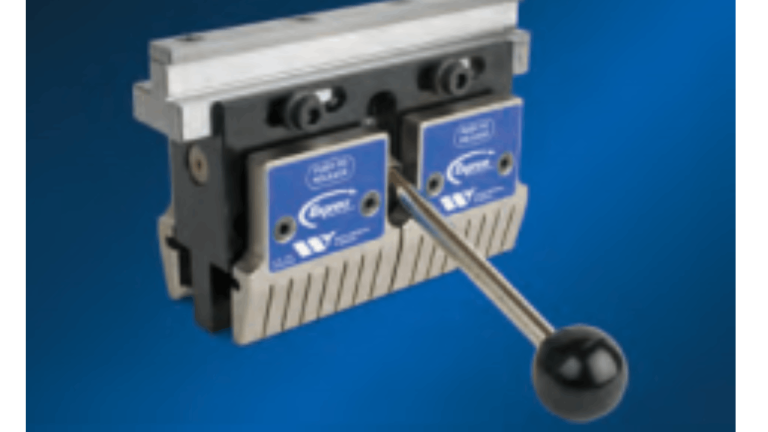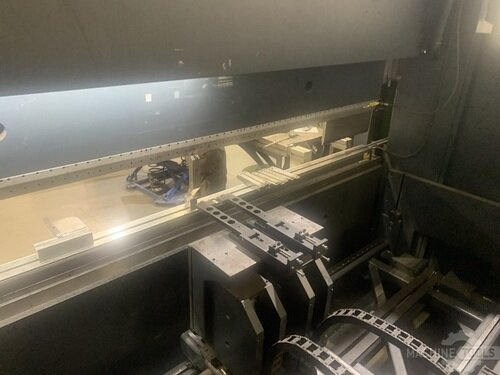After spending years in the field as a Regional Sales Executive at Mac-Tech, I’ve seen firsthand how fabrication shops wrestle with the decision of upgrading existing machinery versus investing in new equipment. My role has always been rooted in understanding each shop’s unique workflow, challenges, and growth goals, then working side by side with owners and operators to chart the best path forward. Whether it’s about squeezing more life and productivity out of a trusted press brake or making a transformational leap with new technology, my focus is on practical, data-driven solutions that boost both efficiency and profitability.
Understanding the Fabrication Shop Landscape: Press Brake Challenges and Opportunities
Fabrication shops today face mounting pressure to deliver faster turnaround times, tighter tolerances, and more complex parts—often with the same or fewer resources. Legacy press brakes, which once were the backbone of shop productivity, now frequently struggle to keep up with evolving customer demands and new material types. In every consultation, I see that owners are looking for ways to bridge the gap between old and new, maximizing their capital investments while remaining competitive.
At the same time, advancements in press brake controls, safety systems, and tooling have opened new doors for shops willing to upgrade. The right move isn’t always obvious, and that’s where a nuanced understanding of both current equipment and available technologies makes all the difference. The question becomes: should you retrofit your existing press brake, or is it time to replace it altogether?
The True Cost of Legacy Equipment: Downtime, Maintenance, and Productivity Loss
Older press brakes often appear reliable on the surface, but hidden costs can accumulate quickly. Unplanned downtime from breakdowns, frequent repairs, and the challenge of sourcing obsolete parts all chip away at productivity. When machines can’t maintain consistent accuracy, operators spend extra time on setup and rework, which erodes margins and delays delivery.
Moreover, older machines typically lack modern safety features and automation, making them less efficient and potentially riskier for operators. Shops can find themselves stuck in a cycle of patchwork repairs, with maintenance budgets ballooning over time. Understanding these hidden costs is crucial when weighing the ROI of retrofitting versus outright replacement.
Retrofitting Press Brakes: Enhancing Performance Without Full Replacement
Retrofitting is an attractive option for shops with sturdy, well-built press brake frames but outdated controls or hydraulics. Upgrading to CNC controls, backgauges, or adding laser-based safety systems can significantly improve accuracy, reduce setup times, and extend the useful life of the machine. For many shops, this means achieving near-new performance at a fraction of the cost of a replacement.
The key to a successful retrofit is a thorough assessment of the machine’s mechanical integrity and the shop’s production requirements. Retrofitting can also be phased, allowing shops to spread investment over time. The result: improved throughput, more precise bends, and less operator fatigue, all while keeping capital expenditures manageable.
Replacing Legacy Press Brakes: When a Clean Slate Delivers Greater Value
There are scenarios where replacing a legacy press brake is the smartest long-term investment. If the frame is worn, the tonnage is insufficient, or the shop requires advanced features—such as automatic tool changers, angle measurement systems, or full integration with laser cutting and robotic material handling—new equipment may provide a step-change in productivity and flexibility.
A new press brake can dramatically reduce cycle times, enable more complex part geometries, and improve repeatability. For shops experiencing rapid growth or diversifying their product lines, the ability to scale with new technology often outweighs the higher upfront cost. Additionally, newer machines generally come with superior OEM support and warranties, minimizing risk and downtime.
Laser Systems and Tooling Upgrades: Maximizing ROI Through Strategic Investments
Beyond the press brake itself, strategic investments in laser cutting systems and advanced tooling can further amplify shop performance. Modern fiber lasers, for example, offer unmatched cutting speed and precision, seamlessly feeding parts to press brakes for streamlined processing. Upgrading to precision-ground tooling or quick-change systems can dramatically reduce setup times and improve part consistency.
Many shops find that pairing a retrofitted press brake with new tooling or integrating a laser system creates a multiplier effect on ROI. The synergy between cutting and bending operations leads to fewer bottlenecks, higher throughput, and improved part quality, all of which translate into tangible bottom-line benefits.
Calculating Payback: Real-World ROI Scenarios for Retrofitting vs. Replacement
ROI calculations must consider more than just purchase price. When evaluating retrofitting, factor in the extended life of your existing asset, reduced downtime, lower maintenance costs, and improved productivity. A typical retrofit can pay for itself in as little as 12–24 months, especially when paired with production efficiency gains.
On the other hand, a new press brake may offer a faster payback if it unlocks new business opportunities, reduces labor needs, or eliminates chronic maintenance headaches. For instance, a shop moving from manual to fully automated bending can see labor costs drop by 30–50%, with quality improvements that win new contracts. The right choice depends on your current pain points, growth plans, and available capital.
Operator Experience and Shop Workflow: Impact on Throughput and Quality
Operator skill and workflow efficiency are often the unsung heroes of shop productivity. Retrofitted controls can make legacy machines more user-friendly, reducing training time and minimizing errors, while new machines often feature intuitive touchscreens, offline programming, and network connectivity that empower operators to work smarter, not harder.
Optimizing workflow—by aligning laser cutting, bending, and finishing operations—can further enhance throughput. The right equipment upgrade, whether retrofit or replacement, should support seamless material flow and reduce handling, ensuring every operator can deliver high-quality parts with confidence and consistency.
ERMAKSAN POWER-BEND FALCON BENDING MACHING
Building Trust Through On-Site Assessments and Relationship-Driven Solutions
At Mac-Tech, we believe that the best equipment solutions start with a deep understanding of your shop’s unique needs. That’s why we prioritize on-site assessments, walking your floor, listening to operators, and analyzing your production data. This hands-on approach builds trust and ensures that every recommendation is rooted in real-world goals, not just spec sheets.
Our commitment doesn’t end with the sale. We provide ongoing training, technical support, and preventive maintenance programs to keep your investment running at peak performance. By building long-term relationships, we help shops stay ahead of changing technology and market demands.
Making the Right Choice: Tailored Recommendations for Your Fabrication Business
No two fabrication shops are alike, and there’s no one-size-fits-all answer to the retrofit versus replace question. The best path forward depends on your machine’s condition, production mix, growth trajectory, and budget. A collaborative approach—combining technical expertise with a clear understanding of your business objectives—ensures you make a decision that delivers lasting ROI.
Whether you choose to retrofit, replace, or invest in complementary technologies like lasers and tooling, the goal remains the same: maximize productivity, reduce waste, and position your shop for long-term success. We’re here to help you weigh every option and make the smartest investment for your specific situation.
Next Steps: Engaging with a Sales Partner Who Puts Your Productivity First
If you’re considering an upgrade or replacement for your press brake—or simply want to explore ways to improve shop efficiency—let’s start with a conversation. My approach is always consultative, focused on your goals and backed by real-world data and experience. Together, we’ll chart a course that maximizes your ROI and keeps your shop competitive for years to come.
Ready to take the next step? Reach out to me at jperry@mac-tech.com, or use the form below to schedule an on-site assessment. Let’s build a solution that’s right for your shop, your team, and your bottom line.
Frequently Asked Questions
How do I know if my press brake is a good candidate for retrofitting?
If the frame is structurally sound and your tonnage requirements haven’t changed, retrofitting can be a cost-effective way to upgrade performance.
Will a retrofit affect the downtime of my shop?
Most retrofits are completed quickly, with minimal disruption, and often scheduled to avoid impacting peak production.
Is a new press brake worth the higher upfront cost?
If your current equipment limits productivity, accuracy, or safety—or if you need advanced features—new machines can deliver significant long-term ROI.
Can I integrate new laser systems with my existing press brake?
Yes, many shops successfully pair new fiber lasers with legacy or retrofitted press brakes to boost overall efficiency.
What kind of support does Mac-Tech provide after installation?
We offer comprehensive training, technical support, and preventive maintenance to ensure optimal performance for years to come.
How quickly can I expect payback from a retrofit or new machine?
ROI varies, but most shops see payback from retrofits in 12–24 months and from new machines in 18–36 months, depending on usage and efficiency gains.
What’s the best way to get started with an equipment upgrade?
Begin with an on-site assessment and consultation to identify your needs and uncover the best upgrade path.
Get Weekly Mac-Tech News & Updates








